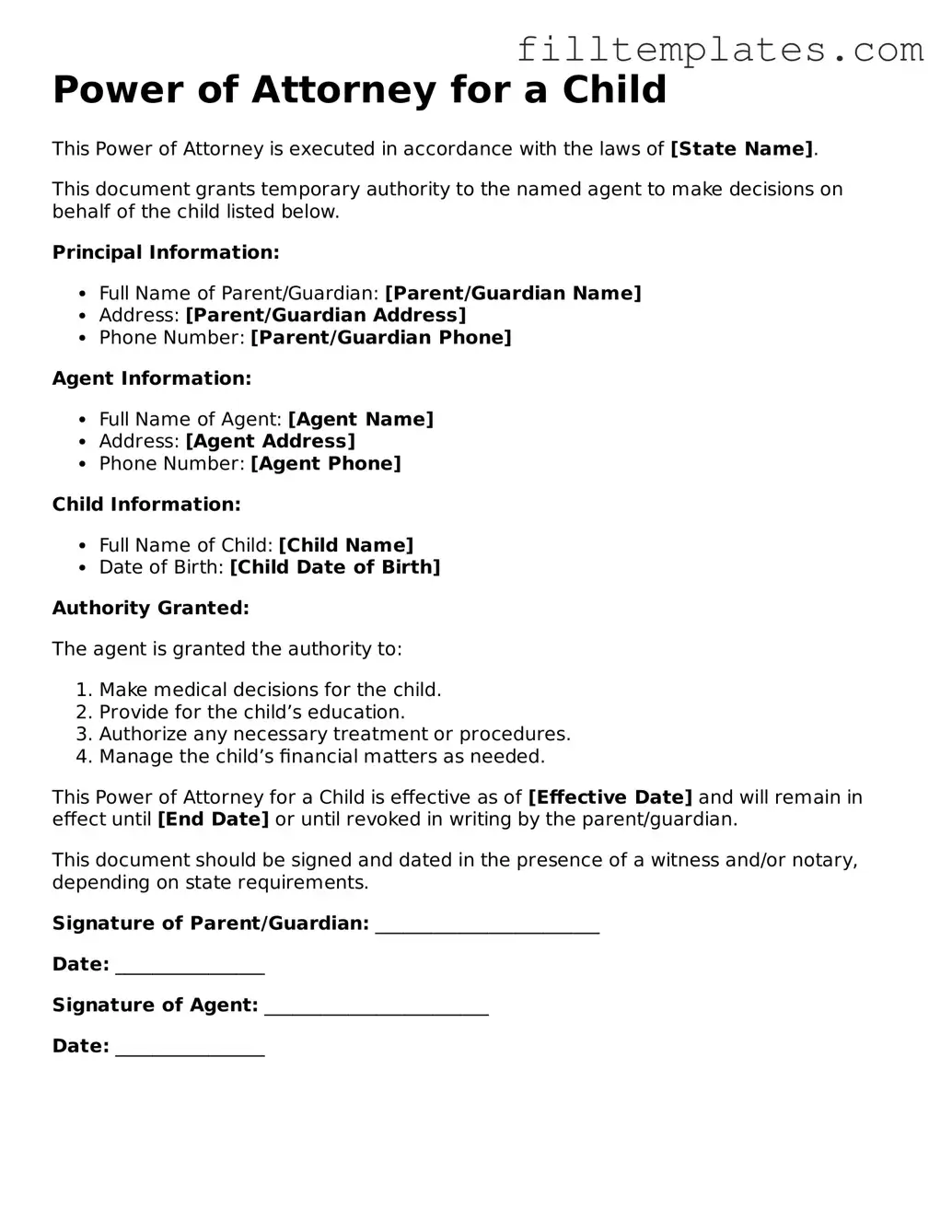Power of Attorney for a Child
This Power of Attorney is executed in accordance with the laws of [State Name].
This document grants temporary authority to the named agent to make decisions on behalf of the child listed below.
Principal Information:
- Full Name of Parent/Guardian: [Parent/Guardian Name]
- Address: [Parent/Guardian Address]
- Phone Number: [Parent/Guardian Phone]
Agent Information:
- Full Name of Agent: [Agent Name]
- Address: [Agent Address]
- Phone Number: [Agent Phone]
Child Information:
- Full Name of Child: [Child Name]
- Date of Birth: [Child Date of Birth]
Authority Granted:
The agent is granted the authority to:
- Make medical decisions for the child.
- Provide for the child’s education.
- Authorize any necessary treatment or procedures.
- Manage the child’s financial matters as needed.
This Power of Attorney for a Child is effective as of [Effective Date] and will remain in effect until [End Date] or until revoked in writing by the parent/guardian.
This document should be signed and dated in the presence of a witness and/or notary, depending on state requirements.
Signature of Parent/Guardian: ________________________
Date: ________________
Signature of Agent: ________________________
Date: ________________
